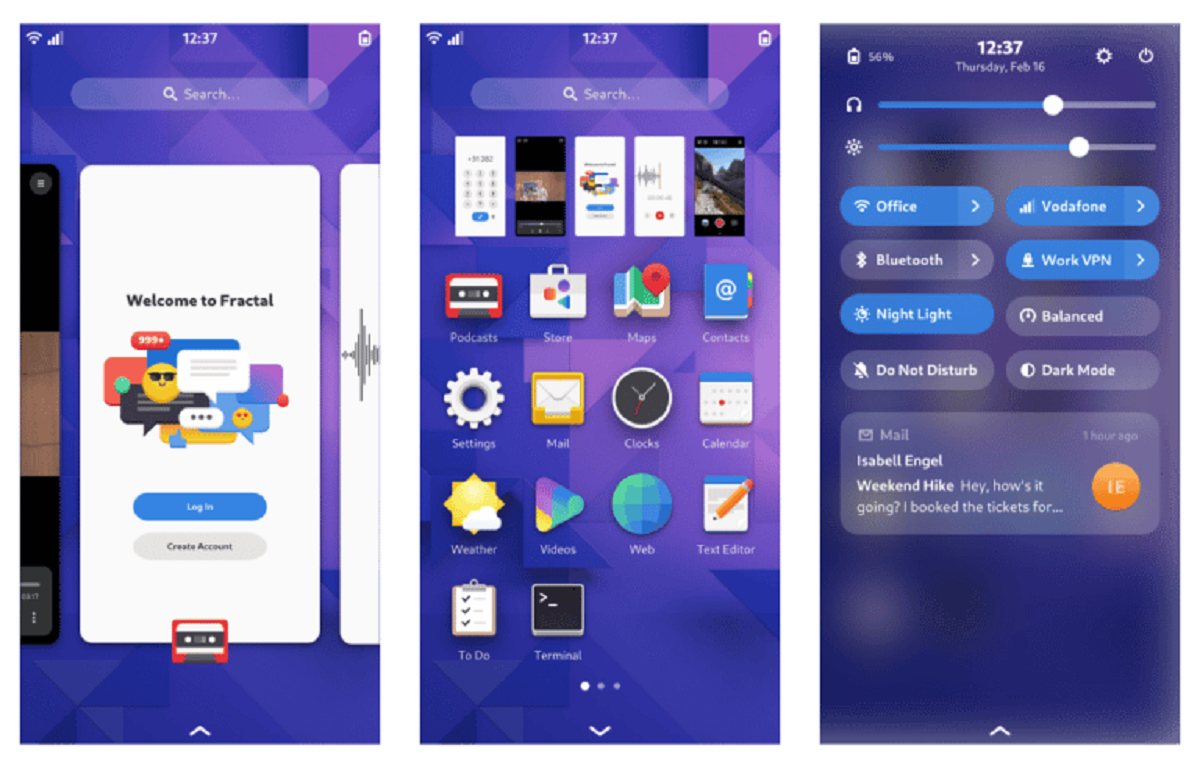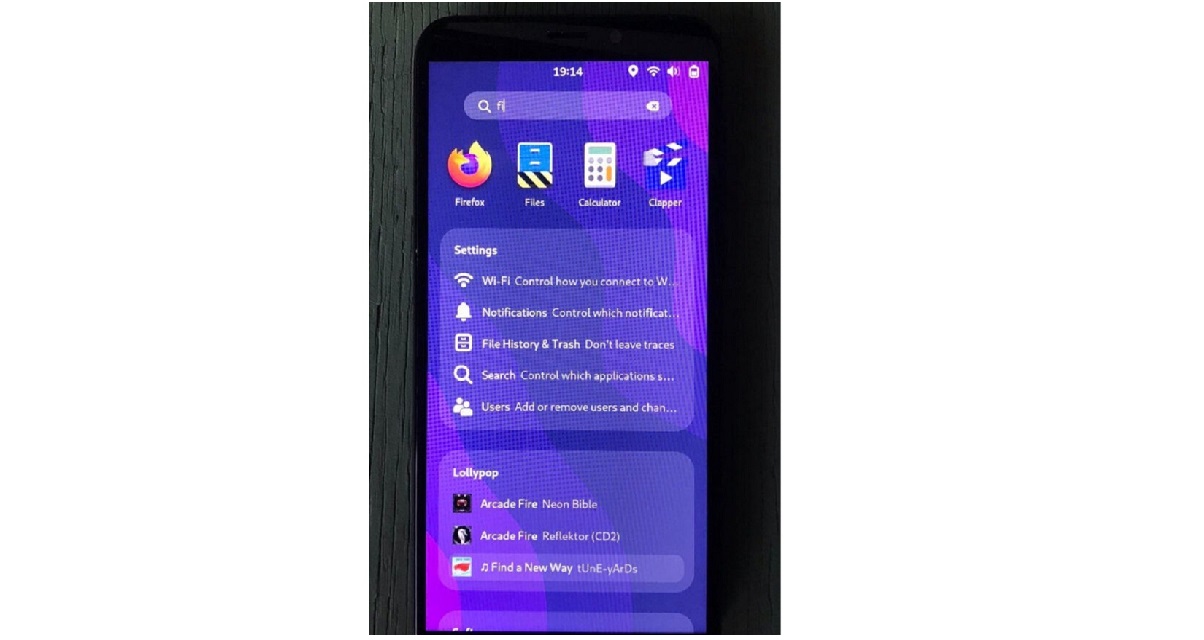
The work is funded by the German Ministry of Education
Jonas Dressler of the Gnome project, recently released a report on the work carried out during the last months to develop Gnome Shell for use on smartphones and touchscreen tablets.
For developers, there are separate branches of Gnome Shell and Mutter, which compile existing changes related to creating a complete shell for mobile devices.
The published code provides support for navigation using on-screen gestures, adds an on-screen keyboard, includes code for adaptive adjustment of interface elements to screen size, and provides an interface optimized for small screens for navigating through features. installed apps.
Main changes presented in the report
In the submitted report, the continued development of 2D gesture navigation is mentioned, which unlike the gesture-based interface of Android and iOS, GNOME has a common interface for starting applications and switch between tasks, while Android uses a three-screen split (home screen, app navigation, and task switching) and iOS uses two (home screen and task switching).
The summary interface implemented in GNOME removed the spatial model confusing and the use of non-obvious gestures, such as “swipe, stop and wait without removing your finger”, instead showing a common interface for viewing available applications and switching between running applications, offered, activated by simple gestures swipe (You can switch between thumbnails of running apps with a vertical swipe and scroll through the list of installed apps with a horizontal swipe.)

Searching implements the information output in a column, similar to searching in the GNOME desktop environment.
On the on-screen keyboard, organizing input using gestures has been completely redesigned, which is similar to the organization of input practiced in other mobile operating systems (for example, a pressed key is released after another key is pressed), plus the emoji input interface has been redesigned. The keyboard layout has been adapted for use on smaller screens, new gestures have been added to hide the on-screen keyboard, as well as auto-hide when trying to scroll.
The screen with the list of applications has been adapted available to work in portrait mode, a new style for catalog display has been proposed, indentations have been increased to facilitate tapping on smartphones. Options provided to bundle applications.
It is proposed a interface to quickly change settings, combined into a dropdown menu with an interface to display a list of notifications. The menu opens with a swipe gesture from top to bottom and allows you to remove individual notifications with horizontal swipe gestures.
Finally, por the part of the plans that are had for the future:
- Port the prepared changes and a new API for gesture control to the GNOME mainstream (scheduled to be implemented as part of the GNOME 44 development cycle).
- Create an interface to work with calls while the screen is locked.
- Support for emergency calls.
- The ability to use the phones built-in vibration motor to create the tactile feedback effect.
- Interface to unlock the device with a PIN code.
- Ability to use extended on-screen keyboard layouts (for example, to simplify URL input) and adapt the layout for the terminal.
- Reworking the notification system, grouping notifications and calling actions from notifications.
- Add a flashlight to the quick settings screen.
- Support for regrouping workspaces in overview mode.
- Made changes that will allow rounded corners for thumbnails in overview mode, transparent panels, and the ability for applications to draw in the area below the top and bottom panels.
It is worth mentioning that the current state of development can be found in the GNOME OS nightly builds. Also, postmarketOS builds are being developed separately, including changes prepared by the project.
Source: https://blogs.gnome.org/
I find this OS for phones very nice; I use Debian with Gnome and it is very similar, can it be installed or is it still in beta?